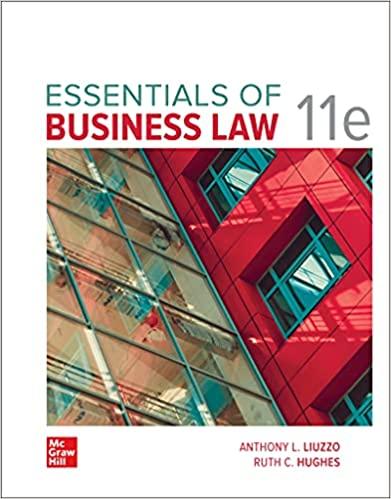Question
Eight states have legalized the recreational use of marijuana: Alaska, Oregon, Colorado, Washington, California, Nevada, Maine, and Massachusetts. In contrast, possession of less than two
Eight states have legalized the recreational use of marijuana: Alaska, Oregon, Colorado, Washington, California, Nevada, Maine, and Massachusetts. In contrast, possession of less than two ounces of marijuana in Texas is a class B misdemeanor, and possession of two to four ounces of marijuana is a class A misdemeanor. The maximum punishment for a class B is 180 days in the county jail and a $2,000 fine, and for a class A is a year in the county jail and a $4,000 fine. Such punishments are unlikelyfar more likely is a substantial fine and probation. However, until 2007, a person arrested with less than four ounces of marijuana would be taken to jail, be booked, and likely spend hours in jail until he or she could post bond (and far longer in jail awaiting trial if unable to post bond). To ease jail crowding and to free police officers to deal with more egregious offenses, in 2007 the Texas legislature gave police the option to cite an offender for possession of less than four ounces of marijuana. A person arrested for possession could be released with a citation much like a traffic ticket. The person would have to appear in court and would be subject to criminal punishment, but would not be arrested, be booked, and spend time in jail until bail was paid. The theory behind this change was that jail space would not be taken up by minor offenders, police resources would be saved (police in the city of Dallas make 100 to 120 arrests per month for small amounts of marijuana), and the county would save money (on average it costs taxpayers $120 to arrest and book someone in an urban Texas county, and it costs taxpayers about $63 a day to keep a prisoner in jail). Despite these benefits, most counties in Texas were unwilling to use this cite-and-release option. By 2016, only Hays, Williamson, and Travis Counties were frequently using cite and release. Collin County District Attorney Greg Davis said Collin County did not use cite and release because "it may . . . lead some people to believe that drug use is not more serious than double parking." Prosecutors also claimed they lacked a system for dealing with misdemeanor tickets. Another concern was that without a booking process where all 10 fingerprints are taken, police would have difficulty establishing a person's identity and it would be easier for an offender to avoid showing up for trial. Supporters of cite and release, however, note the savings in police time and jail space. They point out that the offender is still subject to criminal punishment. Additionally, they point to a study of Hays County where 95 percent of those cited and released did show up for trial. In 2016 the city of Dallas seriously considered an experiment with a cite-and-release program, though the idea was ultimately rejected. Other police departments are looking into beginning cite and release as well.
- What is the tutors reaction to this information?
- What should the policy be (in the tutors opinion)...what are the advantages and disadvantages of the chosen policy approach?
Step by Step Solution
There are 3 Steps involved in it
Step: 1

Get Instant Access to Expert-Tailored Solutions
See step-by-step solutions with expert insights and AI powered tools for academic success
Step: 2

Step: 3

Ace Your Homework with AI
Get the answers you need in no time with our AI-driven, step-by-step assistance
Get Started


